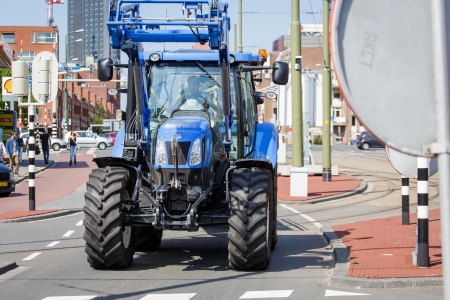Research from the 1980s shows that it is safer to let agricultural traffic use the service road along with cyclists than to let agricultural traffic use the main road along with the high-speed traffic [10]. This is in line with the Sustainable Safety principle to avoid large speed differences. Therefore agricultural traffic is preferably not allowed on distributor roads. However, if no suitable route via a service lane or another access road is available, this could result in an accessibility problem. For example, service roads may not be present due to high construction costs, insufficient space or very little traffic. In those cases, road authorities do allow agricultural vehicles on distributor roads and offer motorized traffic the possibility to overtake these vehicles using the lane for oncoming traffic.
It must be noted that agricultural vehicles on service roads also has disadvantages for road safety if they need to mix with bicycle traffic. Because agricultural vehicles often exceed their maximum speed of 25 km/h (see also the question How fast do agricultural vehicles drive?) this results in speed differences and significant differences in mass. In addition, the size and crash aggressiveness of agricultural vehicles play a role. From the bicycle safety point of view it is therefore better to separate agricultural traffic and cyclists [11]. This is why some road authorities construct both a service road and a bicycle path or let agricultural traffic use the main road.
Which roads are to be used by agricultural vehicles is also a problem in urban areas. They are regularly banned from the routes that bypass the town centre, with the result that agricultural vehicles need to use the road that go through the town centre [12]. Because of their size, shielding and field of vision, this is not a desirable location for agricultural vehicles. The only roads in built-up areas that are suitable for agricultural vehicles are distributor roads that have the separate bicycle paths, crossing facilities and speed-reducing measures at intersections that are required according to Sustainable Safety.
